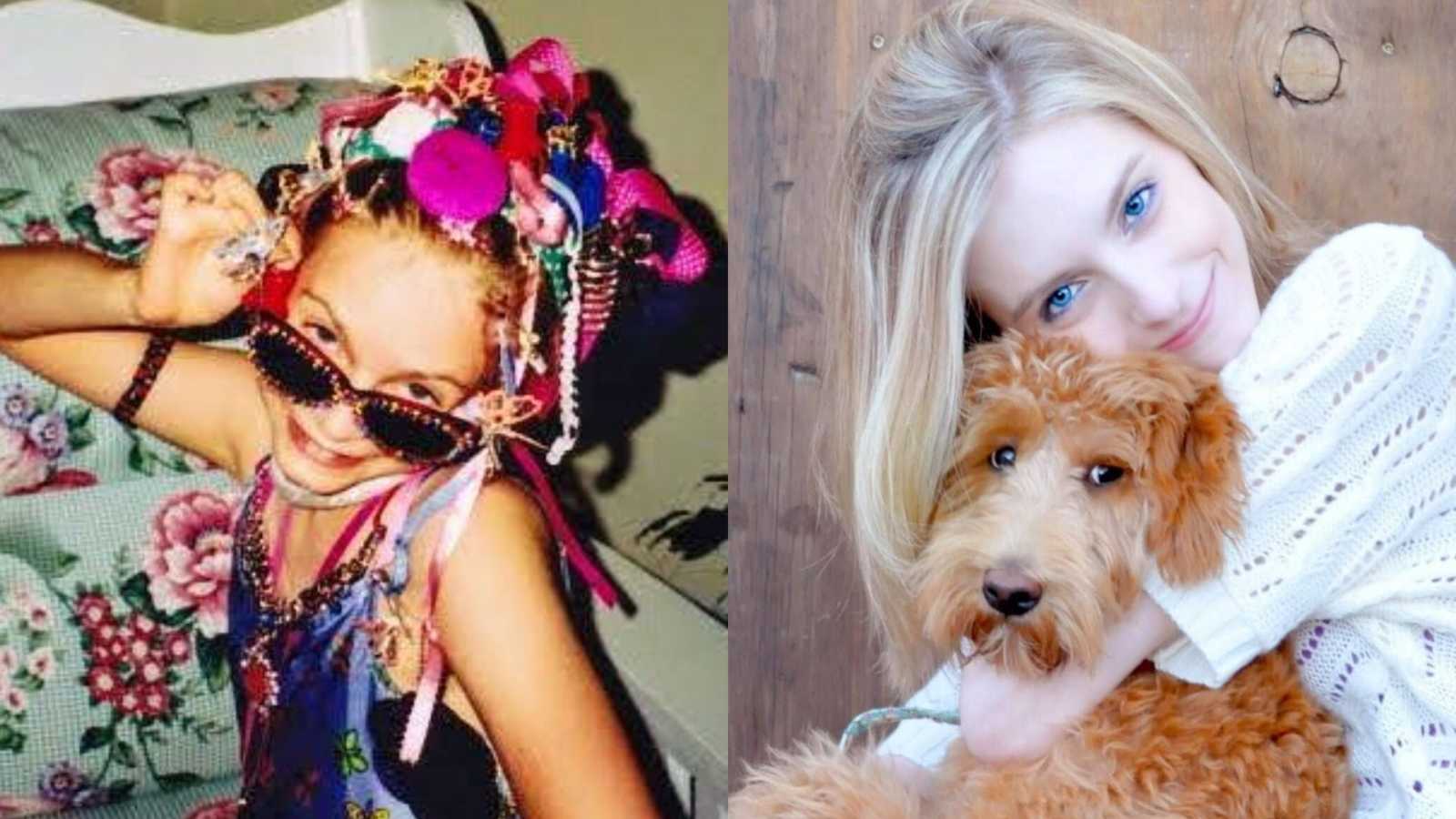“Once upon a time, I was a fairly typical child. Some may say that is still open to interpretation, but just roll with me here.
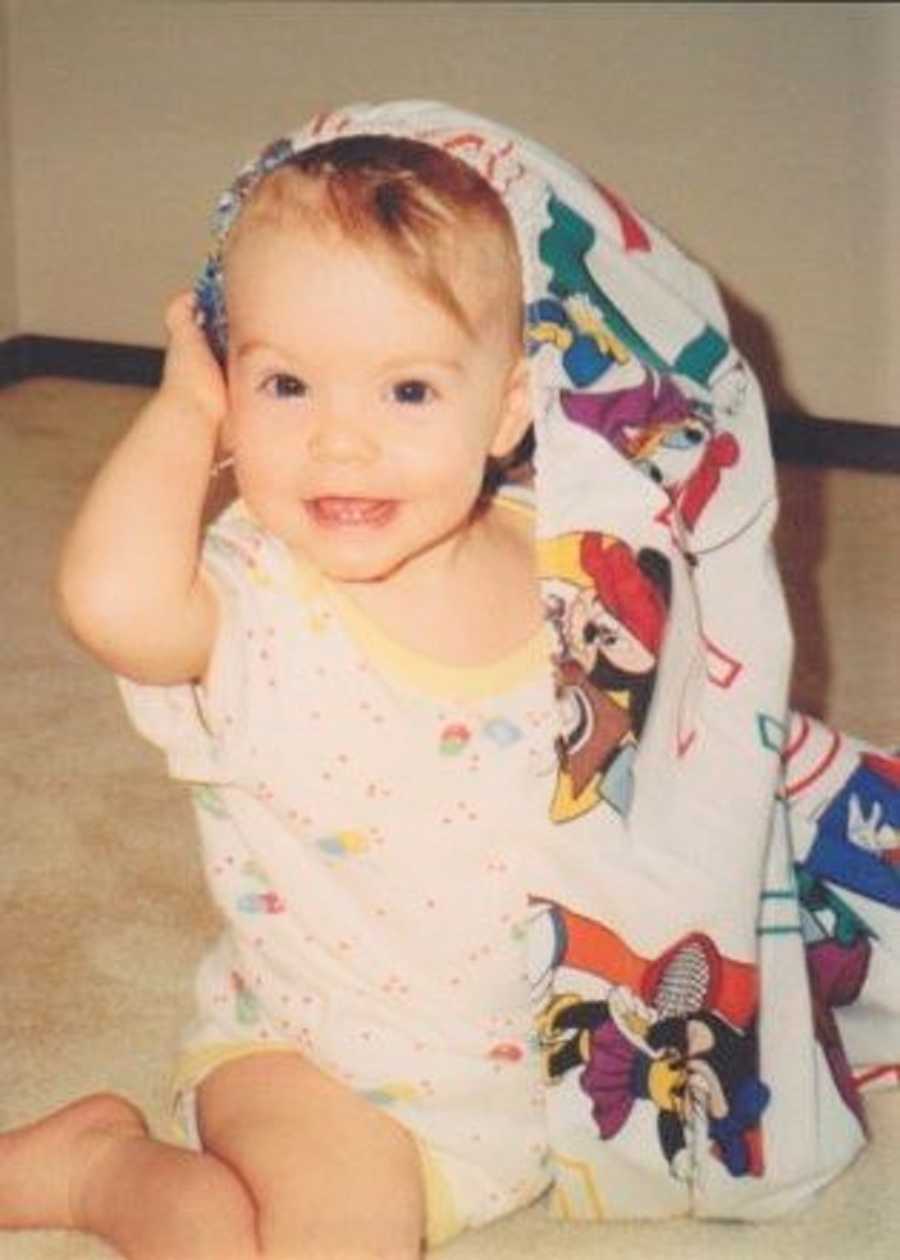
There were some minor abnormalities. For example, I was always a dancer, but even among the other little ballerinas, I was remarkably flexible. I was the only sugarplum fairy who could jump rope with her arms, no jump rope necessary. And heaven forbid if I had to wear tights. My family started going to casual-dress, Saturday night church services just to avoid the chaos that would most surely ensue if I had to dress up for Sunday morning services and wear tights. Those babies were uncomfortable!
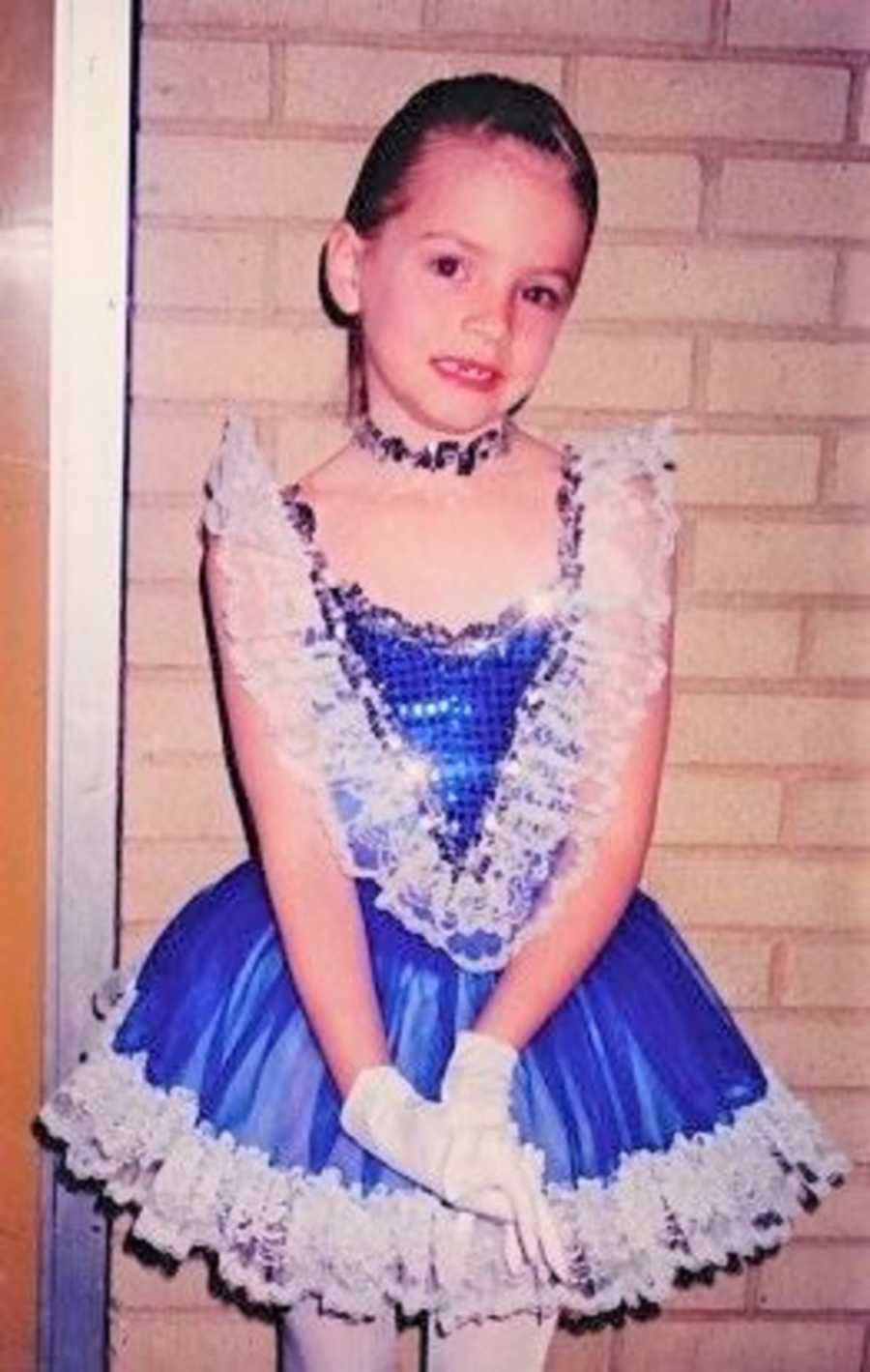
I was a silly little girl, and we only considered these quirks to be a part of my own unique charm.
Looking back, my childhood feels like a fairy tale of sorts. I had a blast playing with my big sister and cousins, camp was my home away from home, and dance class was my happy place. Oh yeah, and I loved dogs. A lot. ‘I’m gonna be a dog until you get me one,’ I told my parents. I barked at the door and howled at the moon. It worked, by the way.
But in 2003, when I was 12 years old, everything shifted, and life as I knew it changed forever.
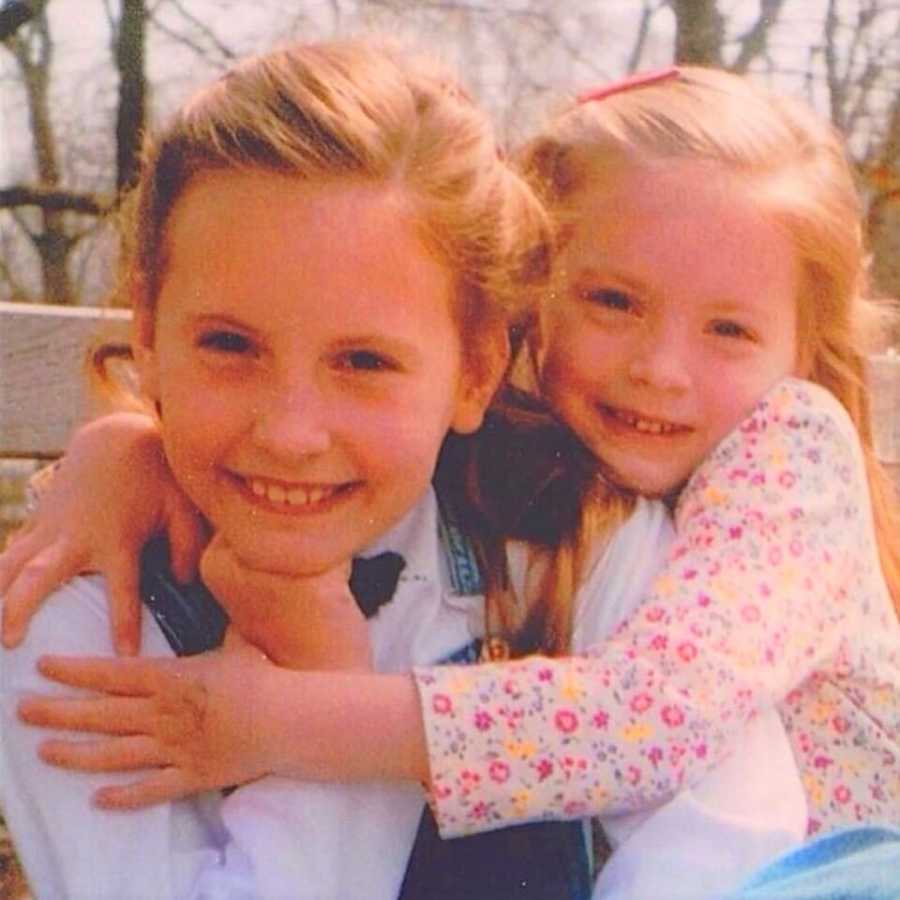
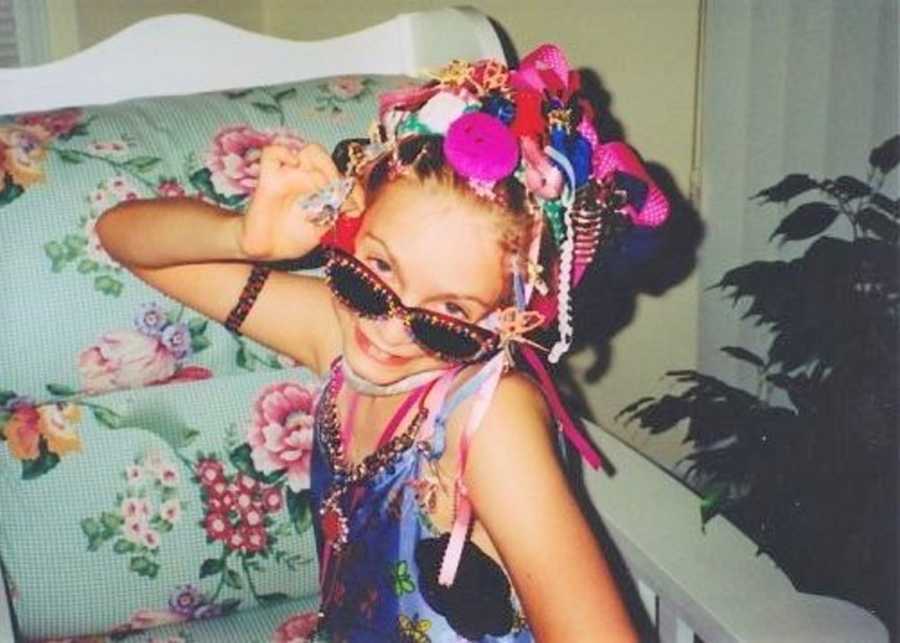
That fall, I came home from horseback riding camp with the worst sore throat of my life, along with swollen, painful lymph nodes and a fever. Not only that, strangely enough, the horse I rode and cared for at camp had mysteriously died the night I became so sick. ‘At least you were stronger than the horse,’ doctors said. It was diagnosed as a staph infection, but even after the active infection was gone, the symptoms lingered for months. From that time forward, I was never the same again.
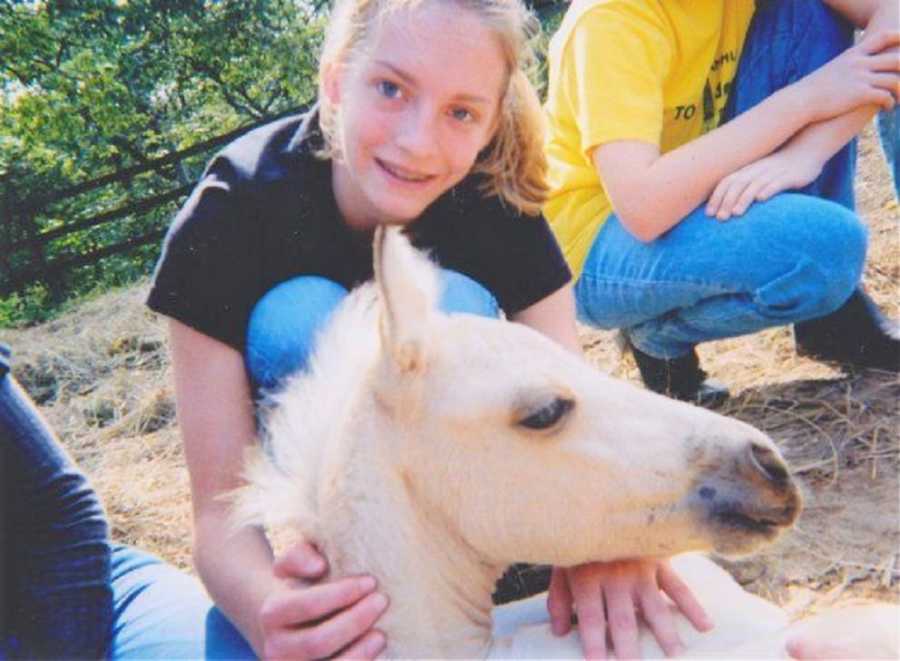
That winter, I ended up in the ER multiple times with fevers and inexplicably high inflammation markers. Our family physician called us late one night when he saw the test results. ‘I just don’t know what to make of this,’ he said. It was weird, but I did my best to shrug it off and get back to my mostly typical life.
In the early days of 2005, a pirouette gone amiss sent me twirling down Alice’s proverbial rabbit hole… except I didn’t land in Wonderland, and I never awakened only to find my curious adventures were just a dream. On that fateful day, I sprained my ankle in pointe class. The next morning, my foot was drastically changing colors and temperatures, and the pain had intensified to such a degree, even the lightest touch of a cotton ball could bring me to tears.
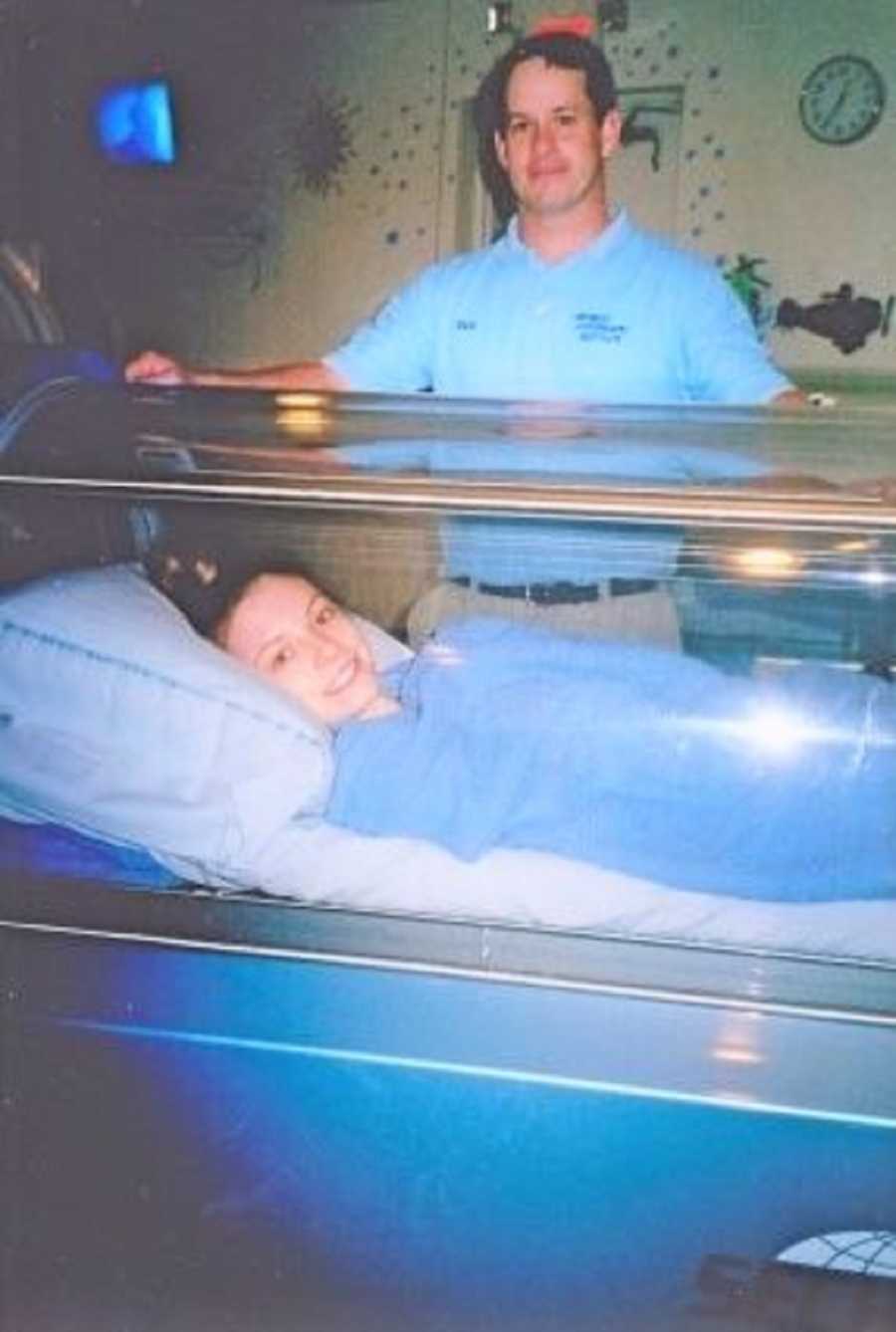
I was diagnosed with Reflex Sympathetic Dystrophy (RSD), also called Complex Regional Pain Syndrome (CRPS), a neurological pain condition. This causes my body to continually misfire pain signals, amplifying pain even after the initial trauma has passed. With an aggressive treatment of loads of medications, week-long epidurals, and nerve blocks, my ankle got better. Back to dancing I went. It seemed like things were finally looking up—for a few weeks, anyway.
Soon after, I completely lost my appetite and developed unbearable stomach pain. I could hardly eat, leaving me malnourished as my weight quickly dwindled. I traveled to Chicago where hyperbaric oxygen treatments provided much-needed relief. But, when they stopped working, RSD pain spread all through my body, sensory processing issues went crazy, and my GI symptoms progressed. It felt impossible to find answers. My parents and I traveled the country, looking for any help we could find.
At last, in March of 2010, a gastric motility test lead to a diagnosis of gastroparesis, or paralysis of the stomach. By this point, even a completely liquid diet was a challenge. My agonizing abdominal pain made eating unbearable. Tiny sips of meal supplements, around the clock, was the only way I could take in anywhere near an adequate amount of calories—an exhausting feat which became nearly impossible.
It was clear this wasn’t sustainable, and we needed to intervene. A feeding tube was set to be the next step. But, an x-ray revealed the isotope, from the motility test 3 months prior, was still in my system, making it evident my digestive tract paralysis was too advanced for a tube to be effective. Instead, I needed total parenteral nutrition (TPN, IV nutrition). I was very scared to start TPN—it can lead to liver damage, and central venous access always has a risk of causing sepsis. But it was my only option. I hoped it would be a short-term thing, but 10 years later, it is still my reality.
When I had a procedure to place a port-a-cath, I woke up to have the most traumatic reaction I have ever experienced, leaving me paralyzed for a week and unable to take more than a few steps for the next month. My right arm has been fixed in a hyper-extended position and has been extremely painful ever since.
2011 was no better. In February, I found myself in a hospital 1,000 miles from home with a raging fever, depleted blood counts, and skyrocketing liver enzymes and inflammation markers. I suffered through 2 weeks of this and wouldn’t have survived if my mom hadn’t insisted a hematologist be consulted. I was given a blood transfusion, which temporarily settled my symptoms.
When I had a nearly identical episode a few months later, a bone marrow biopsy revealed I have Hemophagocytic Lymphohistiocytosis (HLH), a very rare, life-threatening disease typically found in young children. The only potential cure for HLH is a bone marrow transplant. My body was too weak for this, so we tried a gentler treatment. Thankfully, I responded. Hoping to avoid more extreme interventions, I do my best to stay stable by receiving transfusions as needed and by being extra careful to prevent infections which can easily send me into a flare.
Phew! What could possibly tie all of this stuff together? To this day, we are still picking up puzzle pieces, trying to answer that very question. Doctors believe I most certainly have some form of a genetic disease. Even the little quirks from when I was little are part of this big picture—like my flexibility, which we now realize is due to a connective tissue disorder, and my sensitivity to clothes, which is a signal of a larger sensory processing disorder. I likely have mitochondrial disease. Mitochondria are responsible for generating about 90% of cellular energy, and when they fail, mitochondrial disease develops. This can affect almost any system in the body, which would explain my wide variety of symptoms.
Pretty crazy stuff, huh? Thankfully, I was blessed with the strong-willed disposition I need to fight chronic illness with all my might. However, there have been emotional ups and downs throughout this journey. In many ways, my childhood came to a crashing halt when I was just 12 years old, forcing me to grow up quickly, ready or not. But, through those struggles, something became obvious: I would rather be happy than sad. So, I made a conscious decision to choose joy—to look for silver linings every day. God is always good, faithfully sprinkling beautiful silver linings into our days, if only we remember to look for them.
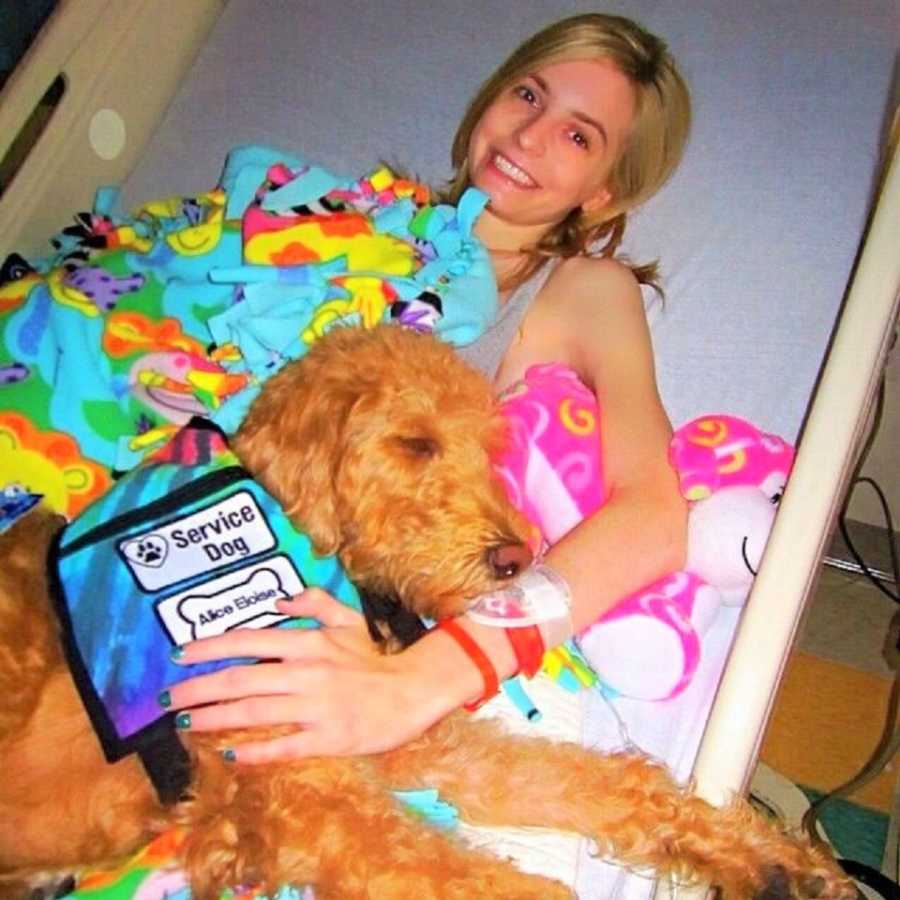
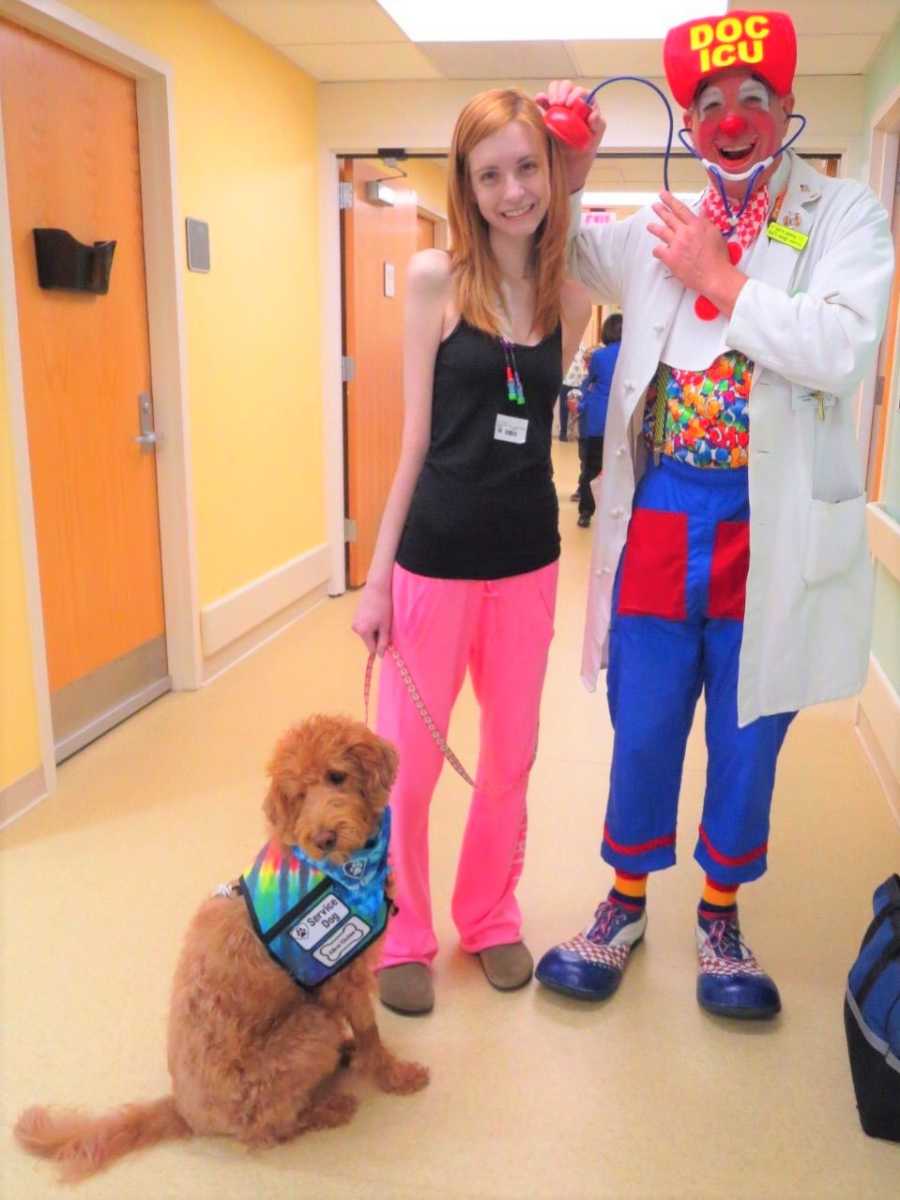
My favorite silver lining is my irresistibly adorable Double Doodle service dog, Alice Eloise. What is a Double Doodle, you ask? Good question! A Double Doodle is a dog who has one Goldendoodle parent and one Labradoodle parent. Also called North American Retrievers, these dogs were originally bred for service work.
The day we met felt like Christmas morning magic. I was told Alice Eloise was the ‘shy puppy’ of the litter. This sweet, gentle puppy who would someday be my service dog, tumbled right into my lap, effectively wrapping me around her tiny paw.
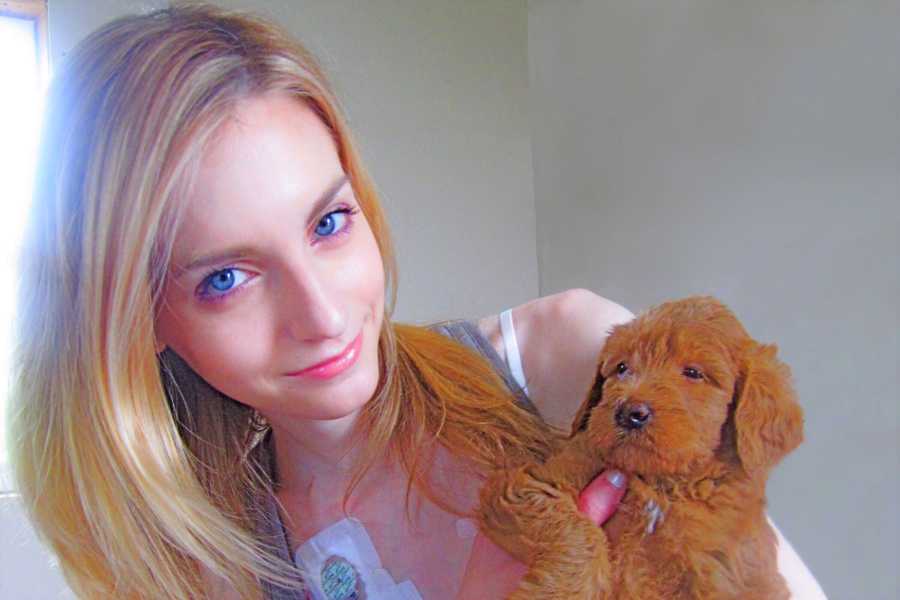
I was released from the hospital following an HLH flare the very same day Alice Eloise came to her new home to live with me. I was still very sick and terribly weak, but Alice Eloise was as cuddly as a puppy could be… and we all know the healing power of puppy love.
Before we knew it, my ‘shy puppy’ built her confidence, losing her timidity and blossoming to have a personality similar to my own: spunky, social, and oh-so silly. For example, every single night she had this irresistible urge to run around like crazy in a mad fit of zoomies. She tried to control herself, but she just couldn’t! And there wasn’t a stranger in the world. She thought anybody and everybody could be a new best buddy.
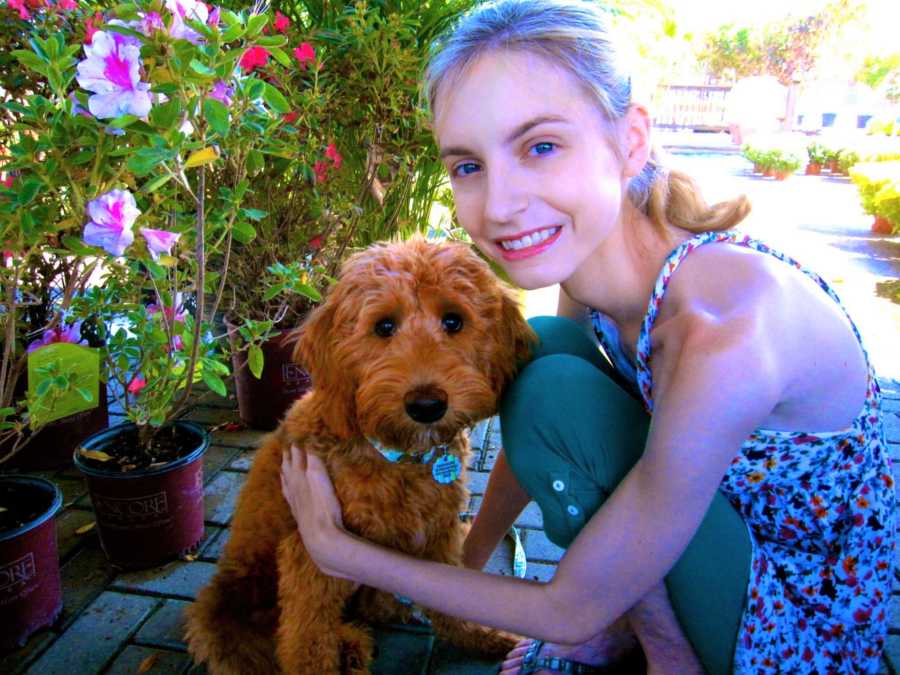
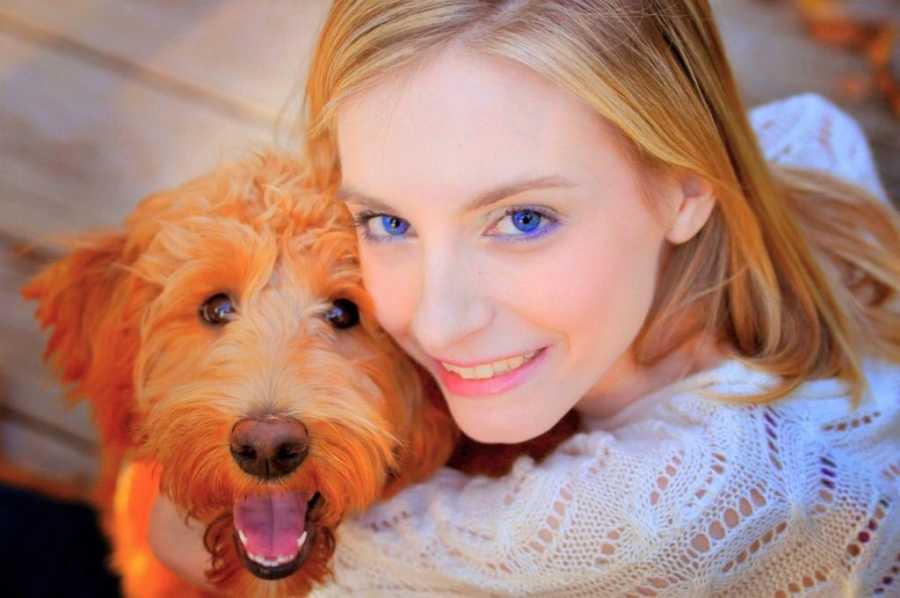
No doubt, there were people who thought we were in over our heads, wondering if we could really be a successful service dog team. But, I always believed in Alice Eloise. Although self training isn’t for everybody, I have no regrets. I am hooked up to IV equipment 24/7, due to hypoglycemia. Since she was a tiny pup, Alice Eloise has been exposed to this IV equipment and all of the little intricacies of my daily life. Although my typical routine is the furthest thing from average, it is all Alice Eloise knows, making it completely normal in her estimation. She has grown into a wonderful service dog, helping me by doing retrieval-based tasks and heeling right at my side when we are out, so nobody bumps into me.
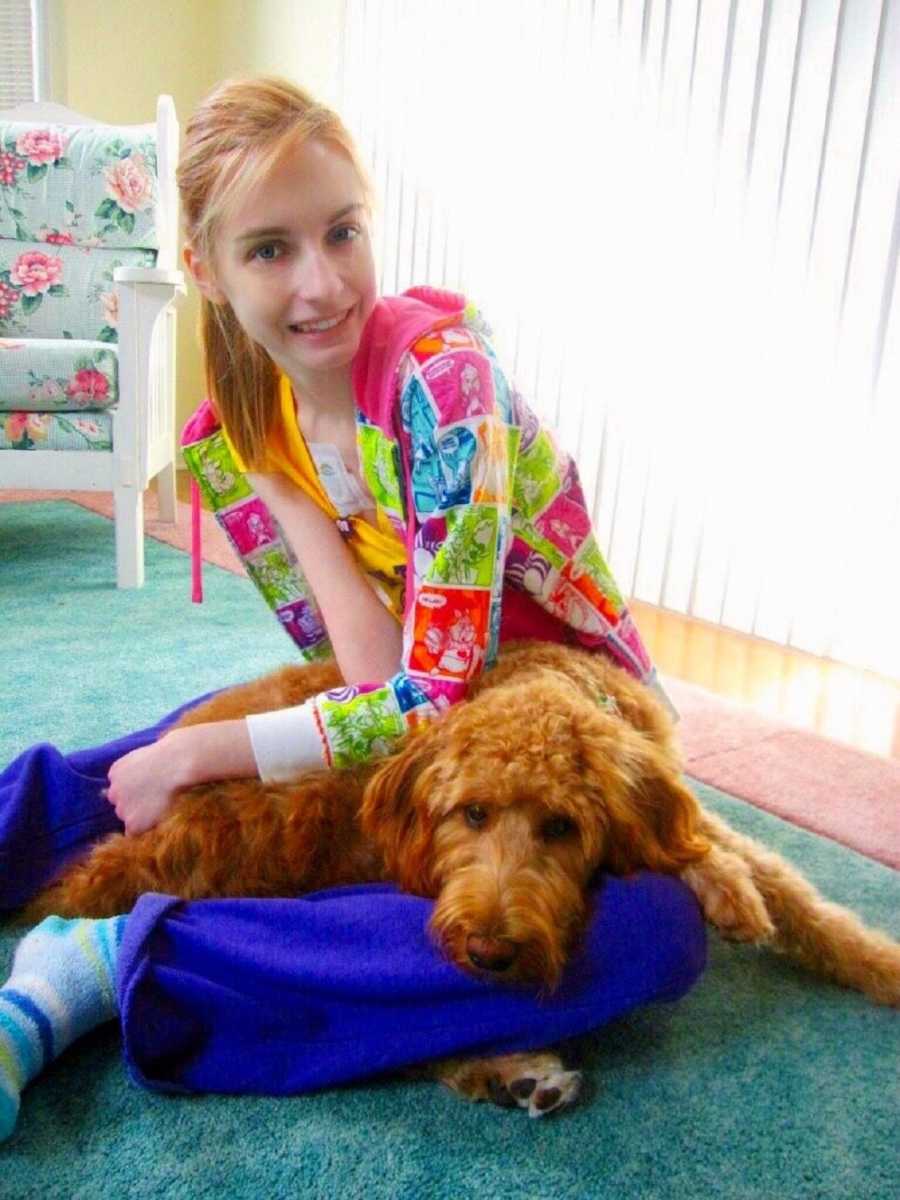

While Alice Eloise grew to become a service dog, she helped me grow, too. I went from being largely home-bound to branching out, starting by going back to church for the first time in years, and gradually regaining parts of my life I never knew I could find again. Last year, we even went to Disney World together!
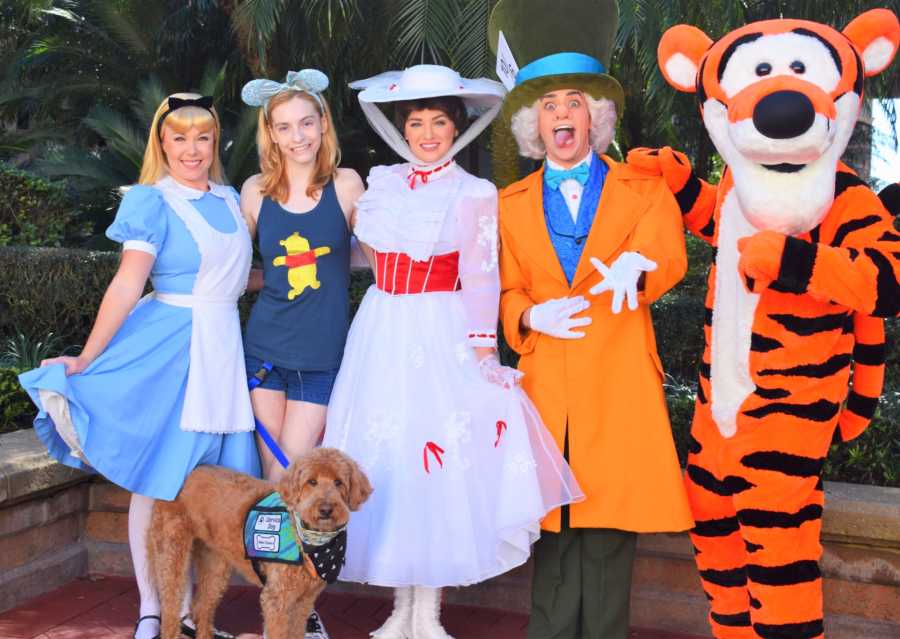
We go on grand adventures anywhere our paws may take us, looking for silver linings along the way. And when we do encounter tough times—like when my left arm became disabled, too—we always have each other. Together we look forward to the silver lining of better days yet to come. And those better days do come. I admittedly had trouble adapting to life with two disabled limbs. But, with a little time and a lot of Doodle kisses, we figured out ways to adjust. Now, I can put makeup on with my feet! And more importantly, I can throw a frisbee with my feet, too. Frisbee fetch is a high priority, you know.
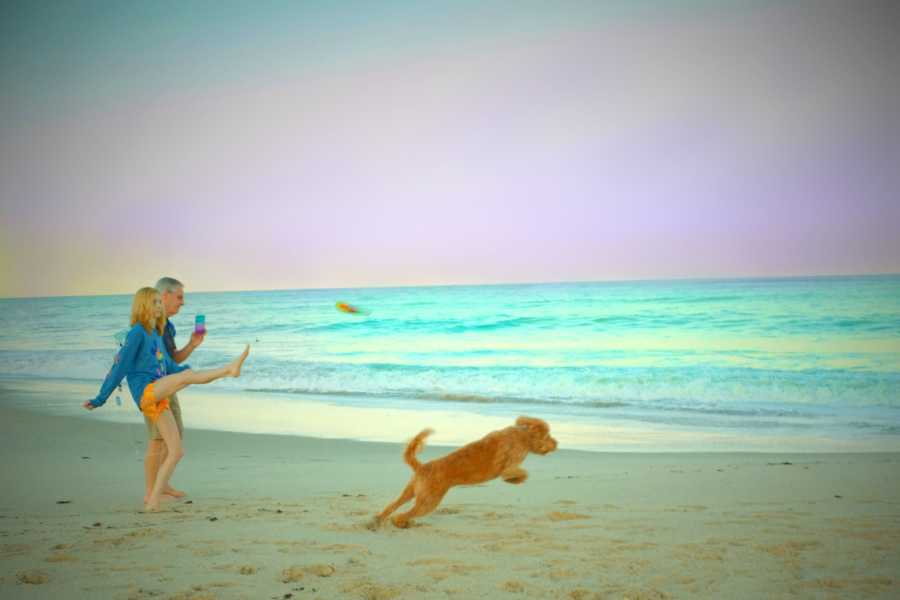
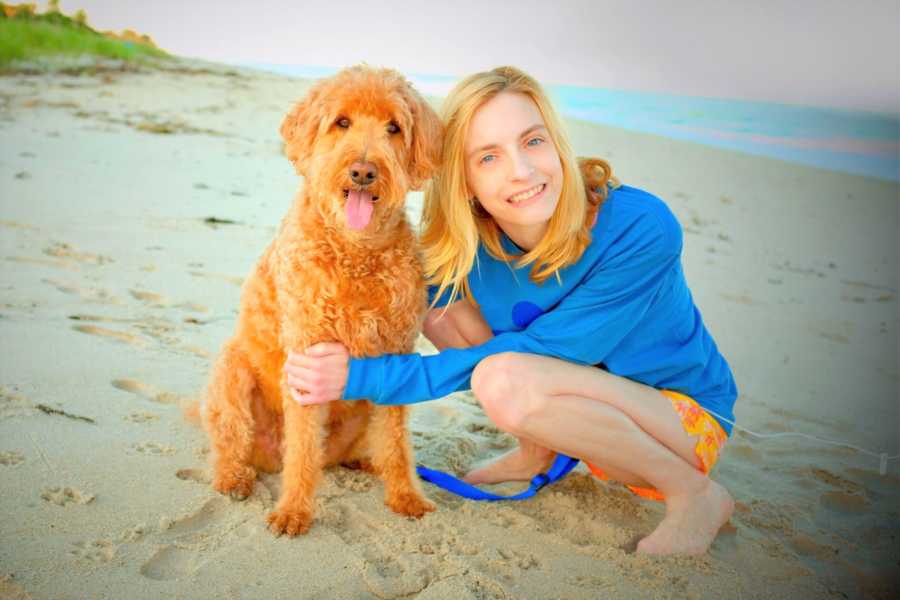
As much as I love dogs, I never could have imagined the life-changing friendship I would find in Alice Eloise. She may be a working dog, but her natural silliness and playful disposition always shine through. This darling Double Doodle brings so much joy to others, spreading sunshine everywhere she goes—and we could all use some extra sunshine these days. So, Alice Eloise and I are telling our story in an upcoming children’s book, ‘Alice Eloise’s Silver Linings: The Story of a Silly Service Dog.’
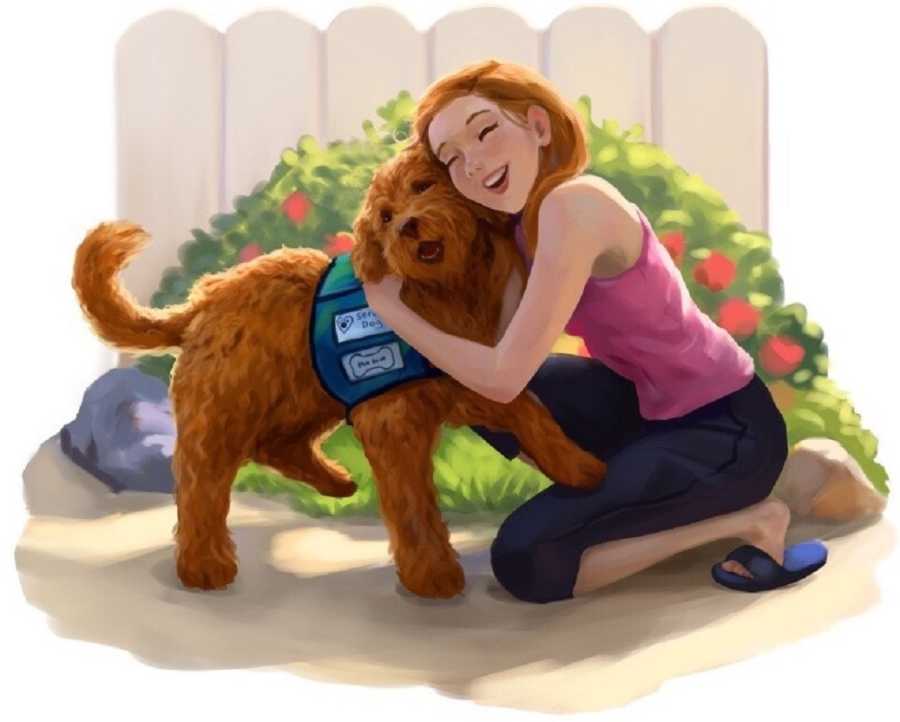
Our book focuses on ‘pawsitivity’ through adversity. Alice Eloise takes readers along on her journey as she looks for silver linings while overcoming challenges to ultimately become a service dog, all while being her silly self. While educating children about service dogs, we want to provide an approachable way to encourage kiddos to be themselves, stay ‘pawsitive,’ and never give up on their dreams. This real-life love story is full of silliness, sweetness, and heart, meant to inspire readers to look beyond a challenge they are facing and find reasons to smile.
Alice Eloise is undoubtedly a bright silver lining that has come to me through a difficult journey with illness and disability. I sincerely hope ‘Alice Eloise’s Silver Linings’ will bring sunshine to readers, even on their cloudy days. Just remember to keep looking for those silver linings… I promise they are always there.”

This story was submitted to Love What Matters by Sarah Kathryn Frey of Edwardsville, IL. ‘Alice Eloise’s Silver Linings: The Story of a Silly Service Dog’ is on track to launch in September. Follow Sarah Kate and Alice Eloise’s journey on their website, Facebook, Kickstarter, and Instagram. Submit your own story here, and be sure to subscribe to our free email newsletter for our best stories.
Read more touching stories about service dogs:
Please SHARE this story on Facebook and Instagram to encourage others to live life to the fullest.

